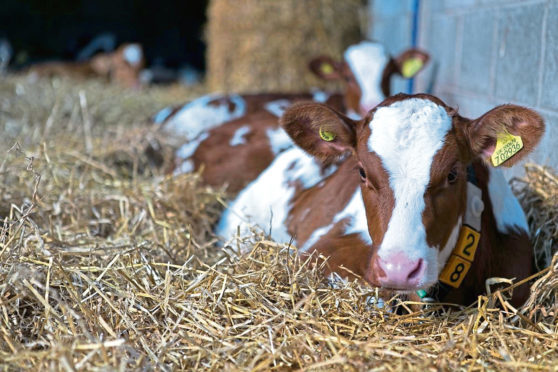A new blood test has been developed to help farmers and vets predict the future health and productivity of dairy cows.
Researchers based at Edinburgh University’s Roslin Institute and Scotland’s Rural College, or SRUC, say testing heifer calves for molecules in their blood, known as microRNAs, could help predict their likelihood of developing disease in the future.
They say the blood levels of certain microRNAs change dramatically during the early life of cows, and some of these molecules are associated with diseases including lameness and mastitis, and with milk production.
According to the researchers, blood testing to monitor microRNA levels in young heifers could help identify those that are likely to have problems in later life – a move they believe will benefit the dairy industry and improve animal welfare.
The approach of testing microRNAs is already being used to diagnose diseases in humans.
Dr Xavier Donadeu from the Roslin Institute said the new testing method could benefit all livestock, and not just dairy cows.
He said: “As shown in previous studies, these results demonstrate that blood testing for micro-RNAs may be very useful as diagnostic tools in dairy cows and potentially other livestock species.
“They could allow for early selection of the healthiest animals in a herd in order to aid productivity and animal wellbeing.”
SRUC Professor Georgios Banos added: “This work was funded by SRUC as a strategic topic of priority. We are investing in scientific research on the development of practical solutions for the improvement of livestock and farm practices.
“We are already designing collaborative follow-up projects and we look forward to exciting new outcomes.”
The researchers say the test has the potential to make a big difference to the dairy industry because up to one third of UK dairy cows are affected by disease or reproductive failure.
The study was published in Scientific Reports.
